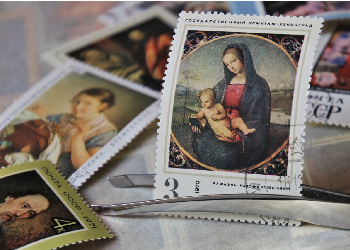Rose of roses
At the roots of the Marian month of May (part II)
It was the Jesuit Hannibal Dionisi (1679-1754), who proclaimed May Marian month, as reported by the title of a booklet “The month of Mary or may be the month of May…”, published by him in Parma on 1725, urging to practice devotion in places of daily life, and suggesting a pattern: praying, preferably the Holy Rosary, before an image of the Virgin, meditating on a mystery of the life of Christ, offering a little flower and reciting an ejaculatory.
As we know it today, the devotion is due to the work of the Jesuit Father Latomia, who, to counter the immorality spread among the students of the Roman College, towards the end of the eighteenth century made a vow to dedicate the month of May to Mary. From Rome the practice spread to all Jesuit colleges and through them throughout the Latin Church. From that moment devotion became widespread, enriching itself with many private practices, so much so that Pope Pius VII, who considered it rich in spiritual benefits, with a Rescritto, of May 21, 1815, granted “to all the faithful of the Catholic world to honour in public or in private the Blessed Virgin with some special homage or devout prayers or other virtuous practices“.
In 1945 Pius XII confirmed the idea of May as a Marian month, establishing that on May 31 the feast of Mary Queen were celebrated, moved after the Council to August 22, while on May 31 the feast of the Visitation of Mary was introduced.
The exhortation to recite the Holy Rosary, as it is seen comes from afar, but in the encyclical Ingruentium malorum, of 1951, Pope Pius XII invited to recite this prayer in the family, entrusting it with the fate of civilian life. In 1965, Pope Paul VI in the encyclical Mense maio, declared May as “the month in which, in the temples and among the domestic walls, more fervent and more affectionate from the hearts of Christians, the homage of their prayer and their veneration rise to Mary. And it is also the month in which the gifts of divine mercy flow wider and more abundant to us from her throne”. Then, the Pope himself, attributing an extraordinary importance to the recitation of the Holy Rosary in the family, wrote in the Marialis Cultus: “There is no doubt that the Crown of the Blessed Virgin Mary is to be considered as one of the most excellent and effective ‘prayers in common ‘that the Christian family is invited to recite”.
The rest is recent history. St. John Paul II, whose Marian devotion was expressed in the motto “TotusTuus” (Entirely Yours), who suffered the attack on May 13, 1981 in the anniversary of the apparition of Our Lady of Fatima. Pope Emeritus Benedict XVI, who collaborating with the Polish Pope was the one to deepen the Marian devotion in the complex of the faith, and who chose significantly as his current residence the monastery Mater Ecclesiae. Finally, Pope Francis who just at the dramatic moment of the pandemic caused by Covid19, urged the faithful to live the month of May in prayer: “It is tradition – he writes -, in this month, to pray the Rosary at home, in the family. A domestic dimension that the restrictions of the pandemic have “forced” us to make the most of, also from a spiritual point of view. So I thought of proposing everyone to rediscover the beauty of praying the Rosary at home in the month of May. It can be done together, or personally; you choose according to the situation, utilizing both possibilities. But in any case there is a secret to doing it: simplicity”.
Father Massimo Cardamone





